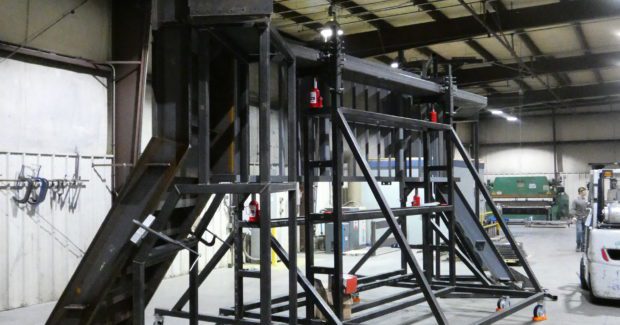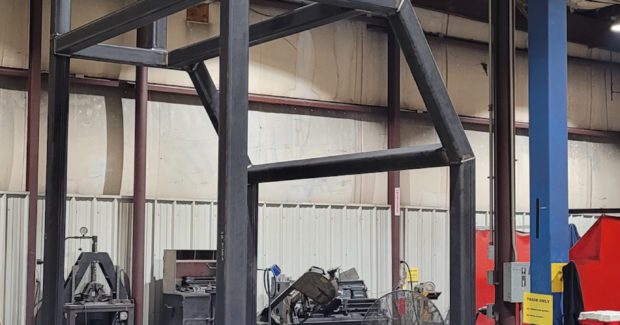Achieving Repeatability in Custom Fabrication Begins in Estimating
During the estimating phase, it is important to understand the key characteristics of the job, for example, with dimensional requirements.
Posted: October 20, 2022
On the surface, it wouldn’t seem like achieving repeatability on a project would be a much of a concern when discussing fabrication of the custom variety. One would think that if a fabrication shop is dedicated to custom-designed projects, then the idea of repeatability wouldn’t necessarily apply. However, custom-designed projects, more often than not, are not limited to “one-off” fabrications. It is typically correct that a custom fabrication organization does not operate like one that has a production line, cranking out the same part or product over and over every day. However, it is very common for a custom fabrication shop to have orders of multiple products that must be identical in many ways. Any variance from one to the next is often unacceptable depending on the application. The challenge for most custom fabrication shops is determining the best approach and institute the type of protocol that is going to ultimately achieve this need for repeatability.
The team at WB Industries has embraced a “Plan the Work – Work the Plan” initiative. Part of this is the BFDI approach – the Big picture (what the tool is supposed to do), the Functionality (how it is supposed to do it), the Detail accountability (the different parts of the tool) and the Inter-relationships between the parts (how the different parts are supposed to work together). The last piece of this approach, the Inter-relationships between parts, is key to achieving the repeatability required. This concept has a place throughout the manufacturing journey.

The quest for repeatability typically begins during the estimating phase. If the job a custom fabrication shop receives involves any kind of quantity to it, the customer must have an assurance that every unit is identical to one another. During the estimating phase, it is important to understand the key characteristics of the job being undertaken. These key characteristics can very often have a dimensional requirement, and these dimensions may have a very tight tolerance. Others may be versed in exactly how the tolerance should be applied. Understanding this and knowing that the tolerance on every weldment doesn’t need to be applied the same way affects the approach to the job.
During the estimating phase, depending on the key characteristics required, it may be best to implement a JFT (jigs, fixtures, templates) strategy to the job and build that into the estimate. This way, there are no surprises, and that added cost can be built into the budget to best achieve that repeatability the job may require.
It’s important to understand exactly what we mean by jig, fixture, template and tooling. Too often these terms get interchanged when they shouldn’t be. For the purposes of this discussion, a jig is a manufacturing aid designed to provide repeatability, accuracy and interchangeability of manufactured parts. A fixture is a manufacturing aid designed to hold parts in position during production. A template is a manufacturing aid design to simplify the layout before fabrication or verification after fabrication of a complex shape or group of parts on a larger tool.
This points to the bigger picture of truly planning out a comprehensive approach before sending a job to the planners. The planners are going to have to figure out how to make it work but understanding the approach during the estimating phase can avoid unnecessary delays or unexpected costs.
A mistake that can often be made by fabricators is taking a siloed approach with the details of the project. By diving into the details in a drawing, and then estimating the components that make it up, estimators are missing half of the inputs that is going ultimately provide an accurate assessment and thus an accurate estimate of the costs involved. Alternatively, estimators need to not only add up all of the details in the drawing, but also understand how they fit together – the inter-relationships between them.
This is where tooling is so critical in the planning phase of the job. For example, if a pin must go into a certain hole, and the tool is already put together, there may need to be a significant update to the tool. The right tooling can make all the difference in the success or lack thereof in the consistency and repeatability of a fabrication job. Some common tooling in the industry includes items such as drill bits, reams and taps, drill/tap blocks, hones, gauge pins, etc. If the tooling is improperly planned, the job will surely suffer.
By using a JFT strategy for the job, the fabricators are able to fine tune the tolerances of the weldments to exactly where they need to be, and essentially build out job on the template itself. This is much more efficient than the alternative. For example, when building a weldment, it can be very difficult to notice when the finished products start to get out of control. Steel and aluminum weldments tend to warp in the heat, and it can be difficult to notice during the process. Then, by the end of the project, they turn out to be nowhere near the tolerance that was required. By using jigs, fixtures and templates, you’re taking the appropriate counter measures to ensure this doesn’t happen.
Subscribe to learn the latest in manufacturing.





